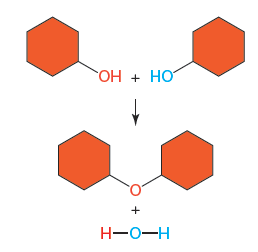
Figure 3.7B
The figure above illustrates a ____ reaction that produces one ____ and a ____.
A. condensation; hydroxyl; polymer
B. condensation; water molecule; polymer
C. cleavage; water molecule; monomer
D. rearrangement; water molecule; polymer
E. rearrangement; hydrogen ion; polymer
Answer: B
You might also like to view...
Damage to sensory receptor cells would most likely result in _____
I) hallucinations II) inaccurate integration of sensory information III) an inability to detect sensory information A) only I B) only II C) only III D) only II and III E) I, II, and III
The pyruvate dehydrogenase complex oxidizes and cleaves pyruvate to form one CO2 and
A. lactate. B. isocitric acid. C. succinyl-CoA. D. acetyl-CoA.
. Of the four types of T cells, only the ____________________ cells destroy infected body cells. Fill in the blank(s) with the appropriate word(s)
You mix sugar in water and stir until it's completely dissolved. In this system, the water is the ________, the sugar is the ________, and the end result is a ________
A) solute; solvent; solution B) solvent; solution; solute C) solute; solution; solvent D) solution; solvent; solute E) solvent; solute; solution